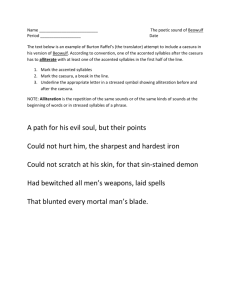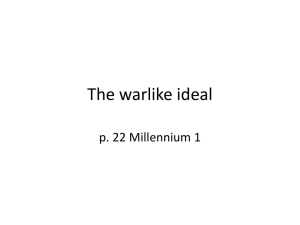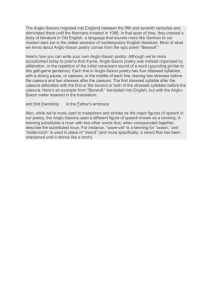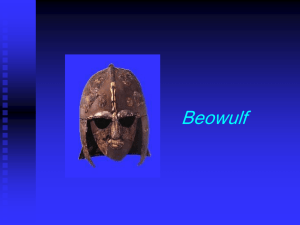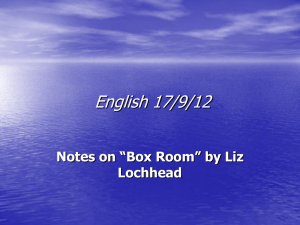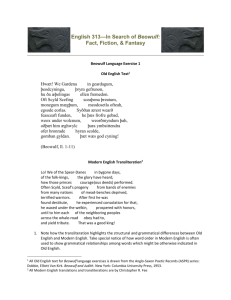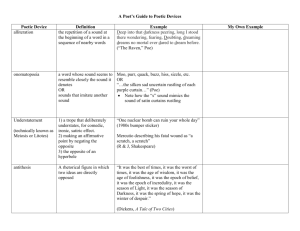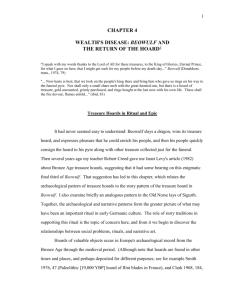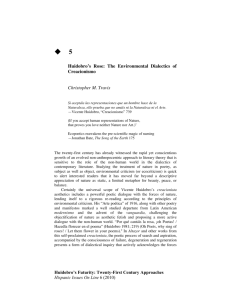Anglo Saxon Poetry Techniques
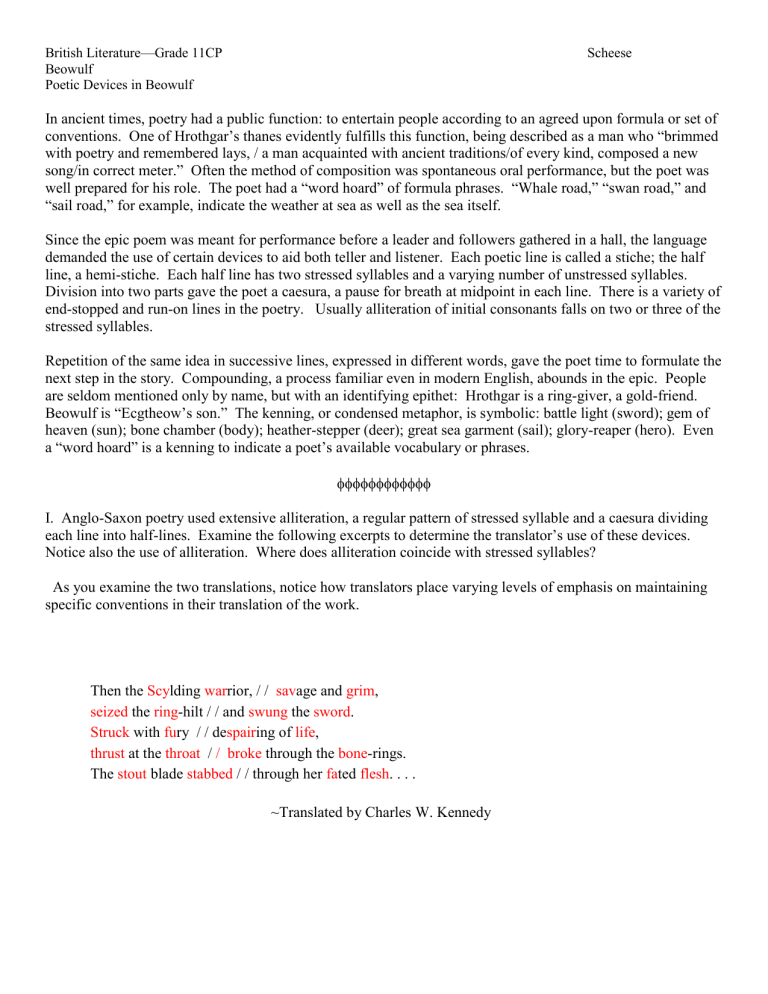
British Literature—Grade 11CP
Beowulf
Poetic Devices in Beowulf
Scheese
In ancient times, poetry had a public function: to entertain people according to an agreed upon formula or set of conventions. One of Hrothgar’s thanes evidently fulfills this function, being described as a man who “brimmed with poetry and remembered lays, / a man acquainted with ancient traditions/of every kind, composed a new song/in correct meter.” Often the method of composition was spontaneous oral performance, but the poet was well prepared for his role. The poet had a “word hoard” of formula phrases. “Whale road,” “swan road,” and
“sail road,” for example, indicate the weather at sea as well as the sea itself.
Since the epic poem was meant for performance before a leader and followers gathered in a hall, the language demanded the use of certain devices to aid both teller and listener. Each poetic line is called a stiche; the half line, a hemi-stiche. Each half line has two stressed syllables and a varying number of unstressed syllables.
Division into two parts gave the poet a caesura, a pause for breath at midpoint in each line. There is a variety of end-stopped and run-on lines in the poetry. Usually alliteration of initial consonants falls on two or three of the stressed syllables.
Repetition of the same idea in successive lines, expressed in different words, gave the poet time to formulate the next step in the story. Compounding, a process familiar even in modern English, abounds in the epic. People are seldom mentioned only by name, but with an identifying epithet: Hrothgar is a ring-giver, a gold-friend.
Beowulf is “Ecgtheow’s son.” The kenning, or condensed metaphor, is symbolic: battle light (sword); gem of heaven (sun); bone chamber (body); heather-stepper (deer); great sea garment (sail); glory-reaper (hero). Even a “word hoard” is a kenning to indicate a poet’s available vocabulary or phrases.
I. Anglo-Saxon poetry used extensive alliteration, a regular pattern of stressed syllable and a caesura dividing each line into half-lines. Examine the following excerpts to determine the translator’s use of these devices.
Notice also the use of alliteration. Where does alliteration coincide with stressed syllables?
As you examine the two translations, notice how translators place varying levels of emphasis on maintaining specific conventions in their translation of the work.
Then the Scy lding war rior, / / sav age and grim , seized
Struck
the ring with fu
-hilt / / and ry / / de swung spair
the ing of life sword
,
. thrust at the throat / / broke through the bone -rings.
The stout blade stabbed / / through her fa ted flesh . . . .
~Translated by Charles W. Kennedy
Poetic Devices in Beowulf (continued)
Hrunting was the name of that hafted sward;
It was one famous among ancient treasures;
The blade was of iron; poison-twin-patterened,
Battle-blood hardened; never did it fail
Any man at war who grasped it in his hands,
Who dared adventure in exploit of danger,
In the homestead of fighters; not for the first time. was it now to accomplish an act of valour.
~Translated by Edwin Morgan
II. Create original examples based on Anglo-Saxon devices.
1.
Compose some headlines or slogans for school or community events using alliteration as a key device.
2.
Create epithets that capture a particular trait for either fictional characters or famous people.
Poetic Devices in Beowulf (continued)
3.
Add new kennings to your “word hoard.”
(Example: hero = glory grabber; Mrs. Scheese = red pen wielder)
• teenager
• space ship
• small car
• politician
• photographer
• famous athlete
• cartoon character
• your hometown
• your favorite sports team
• actor/singer

